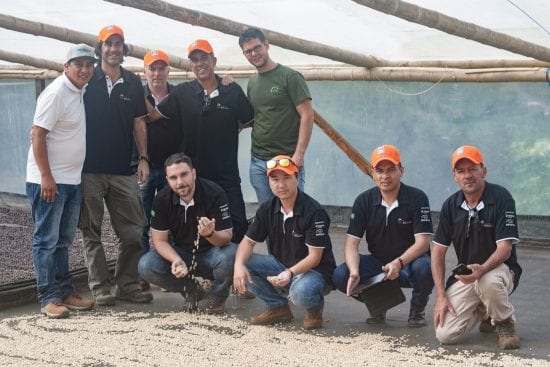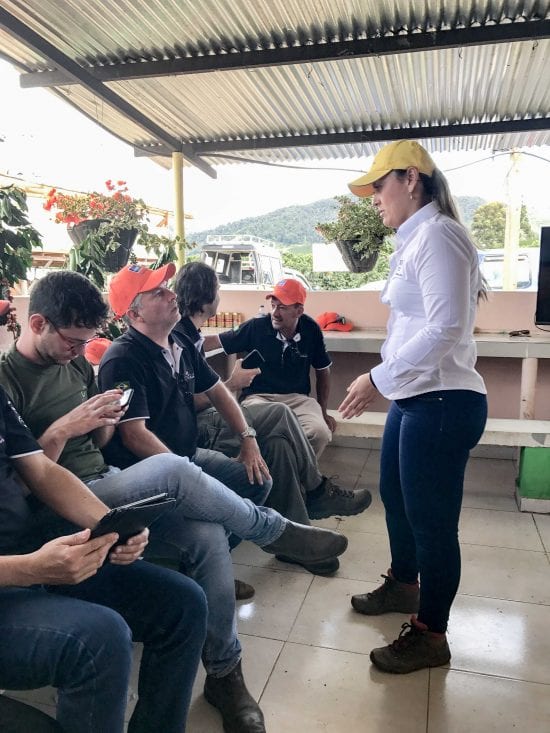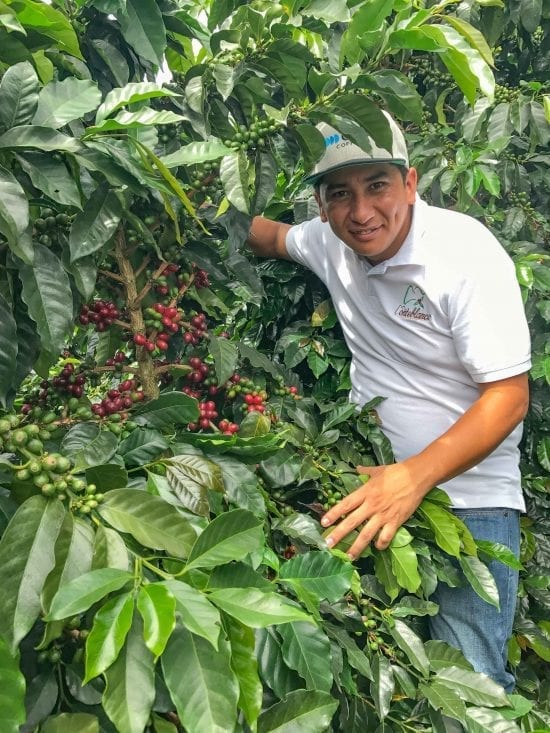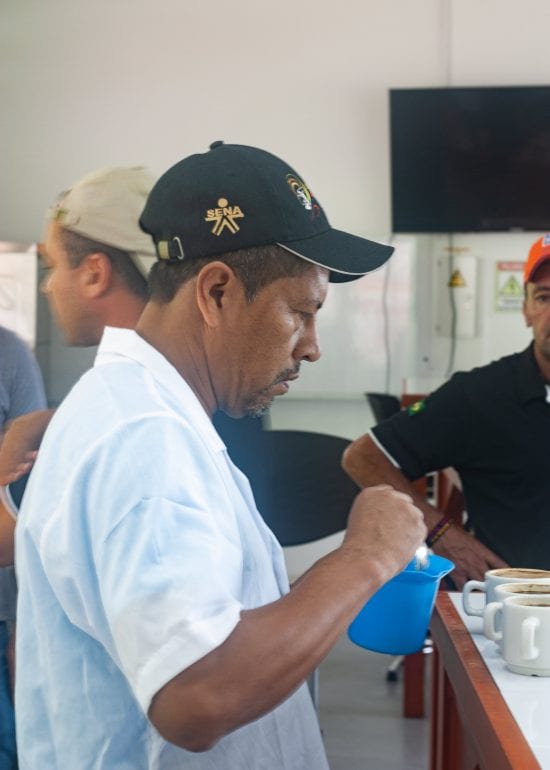
A cup-quality competition takes farmers from Brazil to Colombia to learn about and encourage new and innovative growing practices.
BY RACHEL NORTHROP
SPECIAL TO BARISTA MAGAZINE
Barista and brewing competitions are only increasing in popularity across the world. Cup-quality competitions at origin are also becoming more prevalent, with producers from farms of all sizes eagerly tweaking production in hopes of claiming top prizes.
One such cup-quality contest is offered by EMATER-MG, a governmental program of the Brazilian state of Minas Gerais that offers technical assistance to family farms, in partnership with Atlantica Coffee. This annual competition offers the chance for four winners from each region of Minas Gerais to participate in a trip to get to know another culture and a different kind of coffee production in Colombia.
In May, Ally Coffee had the opportunity to travel with the Brazilian producers who won the most recent cup-quality contest to Colombia as part of the Producer to Producer Exchange Trip. Hours of training and careful preparation contribute to success in barista and brewing competitions, and everything from timely fertilization to controlled fermentations impact the cup quality that earns producers top honors in their contests.

The two dominant styles of coffee processing in Minas Gerais are natural and pulped natural, and EMATER’s cup-quality contest evaluates submissions in both processing categories from the four coffee regions of the state Chapada de Minas, Cerrado Mineiro, Sul de Minas, and Matas de Minas. Regional winners are determined by the highest score between the two categories. This year, natural coffees scored highest in all four regions.
The four winning producers ventured to the Colombian mountains of San Adolfo de Acevedo, outside of Pitalito, Huila, to visit Finca Monteblanco, where they met with producer Rodrigo Sanchez. Rodrigo is also a prize-winning coffee grower, having earned the top score in the cup-quality contest presented by fertilizer company Yara Colombia.

“For the national cup-quality contest, the requirements are that participants use Yara products,” explains Rocio Garzon, agronomist with Yara. “The competition takes place in November, when producers submit 500-pound lots. We send samples to our lab in Medellin. It takes 15 days to select finalists and there is a live cupping to select the top three lots. People say that contests are just for those with money, but no; the contest is for people who do things differently, and when you do things differently, you get different results.”
Rodrigo, his wife Claudia Samboni, and their team of farm managers, quality-control cuppers, and logistics operators certainly do things differently. They achieve both quality—regular scores above 90 points—and quantity, with a yield of kilos per tree that stunned the group from Brazil. This is possible because of their planning and execution. Brazil harvests coffee at one concentrated peak per year, while Colombia harvests over the course of 10 months, due to changes in climate. Still, despite the differences in topography and climate, the producers from Brazil were all ears, taking notes and photos to take inspiration from Rodrigo’s methods and apply Finca Monteblanco’s practices to the needs of their farms.

During the farm visit, the producers from Brazil and Colombia also debated the correlation between cup-quality competitions and selling a full harvest at a premium. Brazil’s coffee industry has evolved for volume; the four producers on the trip manage properties ranging from 20 to more than 300 hectares, whereas Finca Monteblanco is considered a mid-size farm for Colombia at 14 hectares. But no matter the farm size, the lots that win cup-quality competitions with impressive scores are correlated to but not representative of the full harvest.
Edson Tamekuni, a winning producer from Cerrado Mineiro, commented, “I do the competitions to help build the name of my farm, but the lots that produce competition-worthy coffee will always be tiny.” Rodrigo agreed; the specially processed lots that have built Monteblanco’s reputation are only a fraction of the farm’s total output. Is it worth it, then, to focus so much energy in producing competition-worthy lots that are a task apart from the rest of production that sustains a farm? One can argue yes, in large part because of the recognition that success in the competitions brings.

“I am so proud that this competition has brought recognition to my humble family property,” said Antonio Cezar Junior of the Caparao farm in Matas de Minas. For him, the competition and subsequent exchange with other producers was motivation to continue to improve all aspects of farm operations, reasoning that higher-quality management will yield higher-quality coffee.
Cup-quality competitions at origin inspire producers to invest in producing unique coffees with exceptional characteristics. This makes sense only if there continues to be a market for these coffees among specialty roasters and demand from consumers. Winning competitions will always generate pride, but its success as a business strategy remains subject to the whims of the market. For now, it is full steam ahead vying for top titles and hoping that coffee drinkers love the final product as much as the judges do.
 ABOUT THE AUTHOR
ABOUT THE AUTHOR
Rachel Northrop manages communications for Ally Coffee. She also covers Latin American origins, supply chain sustainability, and innovation across the coffee and tea industries as a freelance contributor to several publications.

